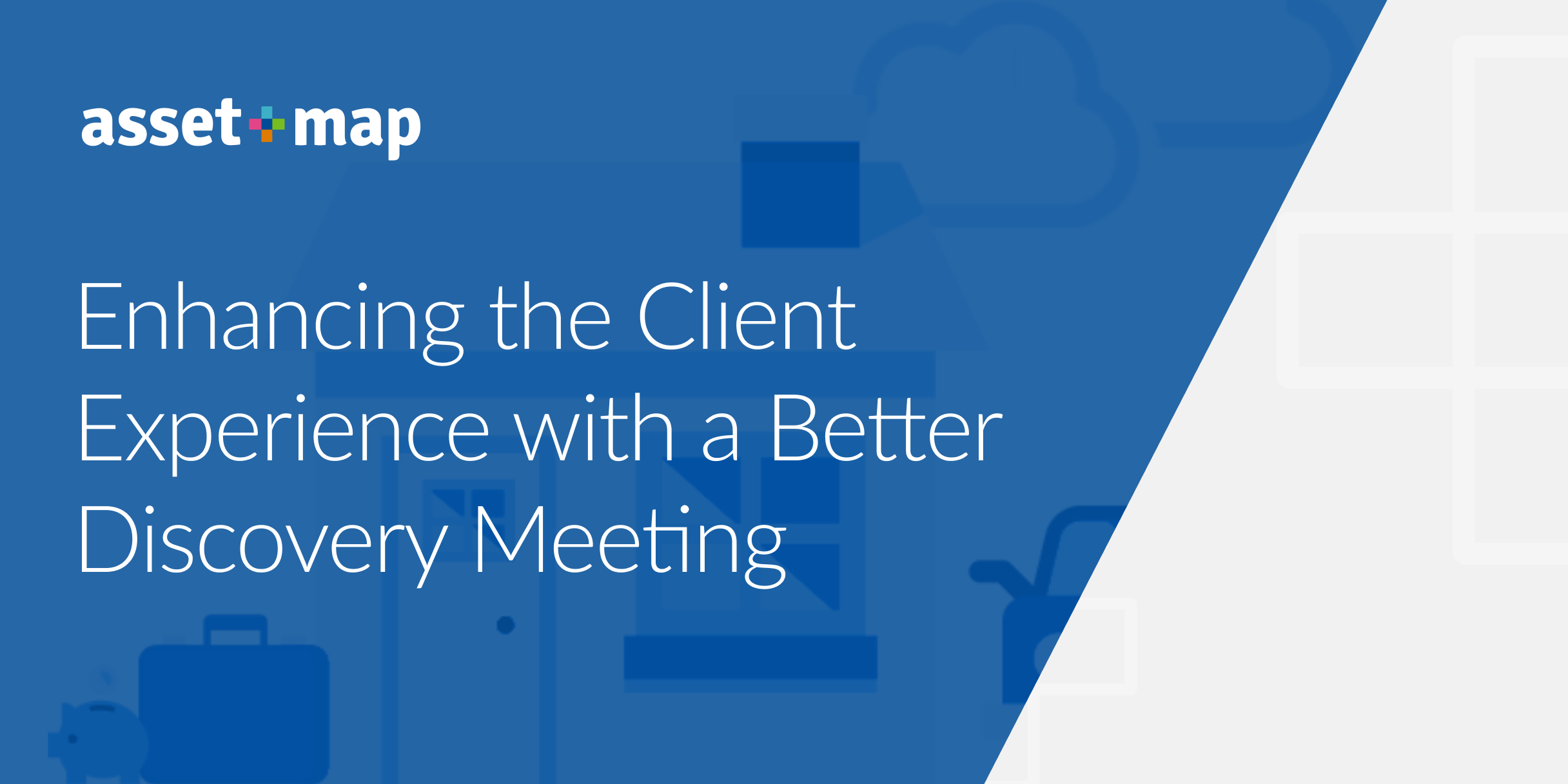Enhancing the Client Experience with a Better Discovery Meeting
The sales process can be excruciatingly long for many advisors.
I regularly speak with financial advisors who conduct three (or more) meetings with a prospect before they even arrive at a point where they ask the prospect to take action and become a client.
What happens before that point?
Typically, there is some kind of “get to know you” introduction, and then some additional work on the advisor’s end that shows how they would invest in the client and what types of recommendations they would make.
Unfortunately, these types of deliverables aren’t always all that engaging—even if they do contain a lot of information. And worse, if the prospect doesn’t become a client, the advisor spends a lot of wasted time on planning preparation.
Thankfully, it’s possible to shorten your sales cycle by creating a more engaging prospecting process earlier in the client relationship.
Here’s how Asset-Map can make sales simple.
Simplify the Conversation
It’s crucial early on in the engagement process for your clients to know that by working with you, they’ll be simplifying what could very well be a complex financial situation.
But all too often, the reports and other deliverables provided by advisors are still too complex for new prospects to easily grasp.
Even a financial plan may come with multiple charts, graphs, and tables demonstrating how the prospect’s investments and income may play out over the next number of years.
Worse than confusing, though, is that those reports are largely static. They’re nothing more than a piece of paper put in front of the client, with no real way to engage or update in real time.
Make It Interactive
When you ask a client to take the Asset-Map Discovery interview before your first meeting, you’re already one step ahead of the game than if they came in not having thought about all the paperwork advisor’s need to make better recommendations.
You can get past the mundane questions—asking where they have accounts, their date of birth, etc.—and get right to the engaging ones, like:
“What do you want to do in your life?”
Even better, the Discovery interview starts an Asset-Map that you can immediately put right in front of them. You can both draw on the report with a marker if you’re in person, or use the digital marker if you’re remote to collaborate on the Asset-Map and uncover new opportunities or find out what gaps need to be addressed.
Immediately, you’ve made your first meeting one that’s interactive instead of passive.
Create a “Right Away” Deliverable
At the end of your first meeting, you can give the prospect a deliverable to take home with them that helps them simplify how they think about finances.
A completed Asset-Map shows them where all their money is located, and how those various boxes fit together to support their goals.
Contrast that to a typical sales process, where the client may not receive anything tangible and personal until the second or even third meeting. You can instantly see what a transformative event this can be in demonstrating to a prospect how your process is different from the average advisor.
Realistically speaking, you could even go deeper and show the prospect a Retirement Funding snapshot with a Target-Map—during the first time you meet. That is adding some real value for them, right away.
Making Your Valuable Apparent From the Start
At the end of the day, your technology is a supporting player—the real star of the show is the financial advice that only you can offer.
When you begin your prospecting process with a Discovery interview and introduce the Asset-Map immediately, however, you can give yourself a leg up and demonstrate the value you can bring to a relationship much more easily.
Ready to improve your client prospecting process? Click here to get started with us.

